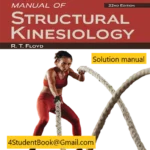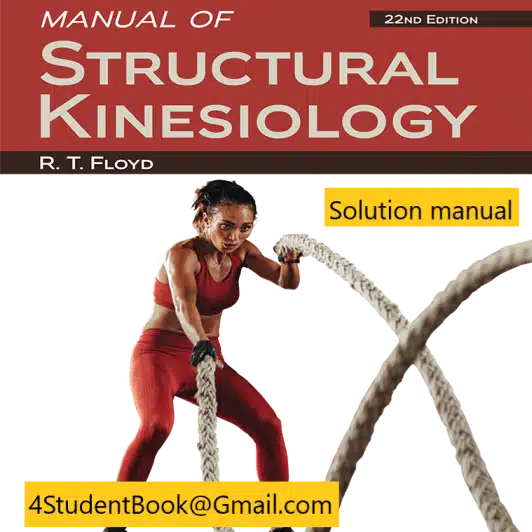



Solution manual for Structural Kinesiology, 22nd Edition By R .T. Floyd © 2024
$39.99 Original price was: $39.99.$24.99Current price is: $24.99.
Solution Manual for Structural Kinesiology (22nd Edition) by R.T. Floyd
![]()
Overview
The Solution Manual for Structural Kinesiology, 22nd Edition by R.T. Floyd offers detailed, step-by-step answers to the exercises presented in the main textbook. Created to support students and instructors in understanding human anatomy in motion, this manual enhances learning by simplifying complex concepts and reinforcing practical application.
Used widely in undergraduate kinesiology, physical therapy, and sports science programs, this edition is designed to help users identify key muscle groups, understand movement mechanics, and apply biomechanical principles effectively. The solution manual pairs seamlessly with the textbook’s clear structure and visuals, making it a valuable companion for mastering course material.
Key Benefits
-
Complete solutions to all chapter exercises and review questions
-
Clarifies anatomical concepts and biomechanical functions
-
Supports exam preparation, homework, and class discussions
-
Ideal for students, instructors, and clinical educators
-
Fully updated to align with the 2024 textbook edition
Chapter Overview
1. Foundations of Structural Kinesiology
Covers key anatomical terms, planes, and axes of motion.
2. Neuromuscular Fundamentals
Explains muscle structure, innervation, and types of contractions.
3. Basic Biomechanical Concepts
Explores levers, torque, and force applications in human movement.
4. The Shoulder Girdle
Analyzes muscles and joint actions responsible for scapular movement.
5. The Shoulder Joint
Focuses on shoulder mobility, stability, and muscular control.
6. Elbow and Radioulnar Joints
Covers motion at the elbow and forearm, including supination and pronation.
7. Wrist and Hand Joints
Details functional anatomy related to grip and fine motor skills.
8. Hip Joint and Pelvic Girdle
Explains pelvic alignment, hip motion, and associated musculature.
9. The Knee Joint
Examines joint alignment, muscle function, and injury considerations.
10. Ankle and Foot Joints
Discusses joint structure in relation to gait and balance.
11. Trunk and Spinal Column
Highlights spinal motion, postural control, and trunk musculature.
12. Muscular Analysis of Selected Exercises
Applies anatomical principles to common exercises and movement tasks.






![Solution manual for Intermediate Accounting [Volume 1&2] 9th Edition By Thomas H. Beechy © 2025](https://booksyhub.com/wp-content/uploads/2025/05/Solution-manual-for-Intermediate-Accounting-Volume-12-9th-Edition-By-Thomas-H.-Beechy-©-2025.webp)



Sasha Grey –
Very well structured
Richard –
Diverse questions
Aiden –
Clear methodology
Robert –
Clear explanation